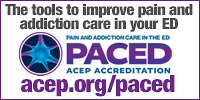- December 1,2015 | ISSN 1940-6967
- The National Association Of Medical Doctors
Featured Sponsors
No One In Washington Really Cares What Physicians Think
By Walter Ray, M.D. and Tim Norbeck
The other day, a staff member of a U.S. Senator reached out to us in an effort to keep them informed and current with health care delivery developments, especially as they relate to physicians and patients. We were delighted by their interest in having such a discussion, and we emphasized those issues which are particularly relevant to physicians today in treating their patients. We suppose that our remarks, by and large, could be construed as a reference guide to the present hostile and intrusive regulatory environment and how it impacts physicians’ practices.
Almost all practicing physicians agree on at least one thing: that their cries for relief from oppressive new regulations go unheeded. No one in Washington really cares what physicians think when it comes to health reform issues. At least that’s what 82 percent of the 20,000-plus physicians who responded to a survey conducted last year. Loss of autonomy and a low morale are natural byproducts of this feeling that their opinion doesn’t matter. For obvious reasons the auto-makers listen to their mechanics; wouldn’t you think that health policy makers would want to listen to physicians?
Richard Baron out to document how much time a doctor spends managing care and discovered that “on a typical day, he or she handles 18.5 phone calls, reads 16.8 emails, processes a dozen prescription refills (not counting those written during a patient visit), interprets 19.5 lab reports, reviews 11 imaging reports and reads and follows up on 13.9 reports from specialists.” Baron added that “this is about meeting the patients’ needs, but it does not generate revenue.” That’s a pretty busy day, and those time allotments don’t even include the actual patient appointments.
Physicians were told that the new, expensive EMR tool would make their professional lives easier. After all, the goal was to facilitate actual coordination of care and cut down on errors and duplication. But in the survey of physicians last year, while 85 percent have EMRs, only 24 percent said they improved efficiency and 47 percent were not happy about having to turn their faces away from the patient towards a computer screen. While most primary care physicians received some aid from the federal government to comply with the transition, they will face financial penalties if they do not use the new system. And the most ludicrous thing of all – the various EMRs are not interoperable with each other. Why is that?
We admit that we are not computer experts, but we have consulted with some who are, and they tell us that there is no good reason for them not being interoperable. Could it be that the IT industry wants it that way?
Furthermore, the ongoing federal role in ensuring “meaningful use” of EMRs is controversial. Many physicians refer to it as “meaningless abuse!”. As Robert Wachter, MD describes it in his new book, The Digital Doctor: Hope, Hype and Harm at the Dawn of Medicine’s Computer Age, there are three stages involved. The first one was designed to make certain that EMRs were being used for health care delivery. Stage 2 tied incentive payments to meeting seventeen fairly aggressive core objectives. Under Stage 3, rules are “tougher, more ambitious and more prescriptive.” Just what overworked physicians laboring in the trenches need: tougher and more prescriptive rules! Dr. Wachter writes very convincingly that “the federal government should prioritize work on interoperability over meaningful use.”
Physicians want more face-to-face time with their patients, not less. Certainly, patients favor more such interaction as well. Quality measurement requirements and new reporting initiatives fly in the face of such wishes. Physicians have complained about being relegated to “box checkers” as they wade through the required 2,167 quality metrics while trying to maintain at least a modicum of eye contact with their patients. “You have a Tower of Babel,” admitted David Blumenthal, who oversaw a report that found attempts to rate care have “unleashed a multitude of uncoordinated, inconsistent, and often duplicative measurement and reporting initiatives.” Truly a mess…but beleaguered physicians must comply with them. If the overseer recognizes such a morass, just imagine the level of frustration that practicing physicians must feel!
And now, physicians and their offices have had to take on the near Herculean task of converting from 14,000 ICD-9 diagnostic codes to roughly 69,000 codes under ICD-10. It has been a very burdensome and expensive process, adding more hassle and more paperwork. Some of these new codes actually include “someone being hurt in a library or a prison swimming pool or at the opera”….bet that happens a lot! And, if you just happen to be sucked into a jet engine, there’s a code for that too! Can anyone say with a straight face that these new codes do anything for patient care? Who dreams these up and exactly who benefits from this added administrative workload? Certainly not physicians. Do patients really benefit from these new codes? We doubt it. The sole beneficiaries of this new scheme seem to be the statisticians and the insurers. Why don’t they incur the costs of the expansion of these codes?
Throw into the mix the Maintenance of Certification (MOC) programs operated by members of the American Board of Medical Specialties (ABMS) with all the other onerous regulatory alphabet soup of demands on physicians, and one can understand why physicians are beside themselves with the unfairness of it all. Critics of MOC programs, and there are many, complain that they are “expensive, time-consuming exercises in busywork.” Clearly, modifications need to be implemented.
Weighing heavily on physicians, particularly those with large numbers of Medicare patients, is how to sustain one’s practice considering that Medicare has raised their reimbursement rates only 4 percent since 2001 while office overheads have increased by over 20 percent.
Hopefully someone in Washington will listen to well-respected economist Paul Ginsberg, President of the non-partisan Center for Studying Health System Change – and not particularly a champion of physicians – when he said, “Medicare has really been pushing its luck with physicians.”
We have one important suggestion that, if implemented, would help patients and physicians immeasurably. Actually it was first put forward some time ago by, Joe Valenti, MD. Dr. Valenti, an OB-GYN from Denton County, Texas believes that two important questions should be asked whenever any new healthcare regulatory measures are proposed:
1. How do they benefit the patient?
2. How do they help physicians help their patients?
If the answer is that they don’t, then they should be scrapped.
In closing, we refer to author Malcolm Gladwell’s observations about the challenges physicians face every day in their practices go directly to the heart of the issue and why relief must be sought. “I don’t understand, given the constraints physicians have in doing their jobs and the paperwork demanded of them, why people want to be physicians. I think we have made it very, very difficult for them to perform their job. I think that’s a shame. My principal concern is the amount of time and attention spent worrying about the business side. You don’t train someone for all of those years of medical school and residency, particularly people who want to help others optimize their physical and psychological health, and then have them run a claims processing operation for insurance companies!”
To paraphrase Winston Churchill, “Whatever the strategy, you should occasionally look at the results.” Is anyone listening?
COMMENTS
-
Joseph T Morgan MD
December 4, 2015 10:28 54I finished training at the end of 1963. After two years in the army, I started private practice in Jan., 1966 and have been in the same clinic ever since. I am completely fit physically and mentally and continue to work full time. I love my work and love my patients and would like to continue for several more years. I am in a small city, and there is no other physician in my specialty within 125 miles. Given the current medical/economic/political climate, it is unlikely that I will be replaced. But...the onerous third party requirements, including a crushing load of what amounts to unfunded mandates, make me question how much longer I can hang on. Overhead continues to escalate. I can\'t bring myself to cut short my face to face time with patients and try to avoid using a computer in the exam room, although there is one there. I start at 9:00 AM and finish seeing the last patient around 5:30. I am personally responsible for the salaries of a receptionist, an RN, and an aide. My nurse spends literally hours on the phone dealing with insurance companies, mainly relating to prior authorizations and trying to explain to patients why they are not going to be able to have the medication I prescribed or how they have an enormous copay for medications or procedures. By the time I cope with the EHR, Stage 2, and the ICD-10, I am lucky to get home for dinner by 7:30 or 8:00 PM. I was trained to do comprehensive narrative chart notes, and I still do. No two or three line entries for a complex Present Illness. No nonsensical templates for Past History, Review of Systems, or Physical Exam. After dinner I typically dictate chart notes, which are transcribed and then dropped into the EHR, for two hours. I don\'t dare schedule any evening social activities during the week, or I will not get it all done. It also makes it almost impossible to have time to study and balance that with family life and weekend recreational activities. My productivity has been cut at least 30%, and my income has suffered proportionately. I see colleagues bailing out in frustration, and it is almost impossible to find qualified physicians to fill their shoes. What we are seeing is the absolute dumbing down of American medicine. The word is out, and many of the best and brightest of the new generation are not going to medical school. Sad to say,I am thankful that my two sons opted for other careers. The only answer I can see to preserve our profession is to get third parties out of the equation and let physicians do what they are trained to do. We need to return to the original concept that medical insurance is strictly a contract between the insured and the insurer, with the physician out of that loop and free to do what is best for the patient, without mountains of regulations and demands that are of no benefit, and in fact are a detriment, to those we serve.
Articles in this issue:
- The Doctor The NFL Tried To Silence
- New York Health Co-Ops Collapse Hits Physicians
- What Cancer Doctors Do Not Know About Cancer Drugs
- No One In Washington Really Cares What Physicians Think
- Doctors Object To High Cancer Drug Prices
- Seeing Through Physicians Eyes: Three Priorities for Pharma
- Hospital Ownership Of Physicians Drives Costs Up
Top Physician Opportunities
Journal of Medicine Sign Up
Get the Journal of Medicine delivered to your inbox.
In This Issue
- The Doctor The NFL Tried To Silence
- New York Health Co-Ops Collapse Hits Physicians
- What Cancer Doctors Do Not Know About Cancer Drugs
- No One In Washington Really Cares What Physicians Think
- Doctors Object To High Cancer Drug Prices
- Seeing Through Physicians Eyes: Three Priorities for Pharma
- Hospital Ownership Of Physicians Drives Costs Up
Archives
Masthead
-
- Editor-in Chief:
- Theodore Massey
- Editor:
- Robert Sokonow
- Editorial Staff:
- Musaba Dekau
Lin Takahashi
Thomas Levine
Cynthia Casteneda Avina
Ronald Harvinger
Lisa Andonis
Leave a Comment
Please keep in mind that all comments are moderated. Please do not use a spam keyword or a domain as your name, or else it will be deleted. Let's have a personal and meaningful conversation instead. Thanks for your comments!
*This site is protected by reCAPTCHA and the Google Privacy Policy and Terms of Service apply.















Barbara Ruhlman
December 5, 2015 19:23 56This is very typical of our government, a lot of words, the longer and the more convoluted the better. The ICD 10 is a joke and is ridiculous. It does NOTHING to improve patient care. It just makes it easier to make an error. Everyone was used to and familiar with the ICD9. I\'m glad that I am retired and no longer have to deal with all this craziness.